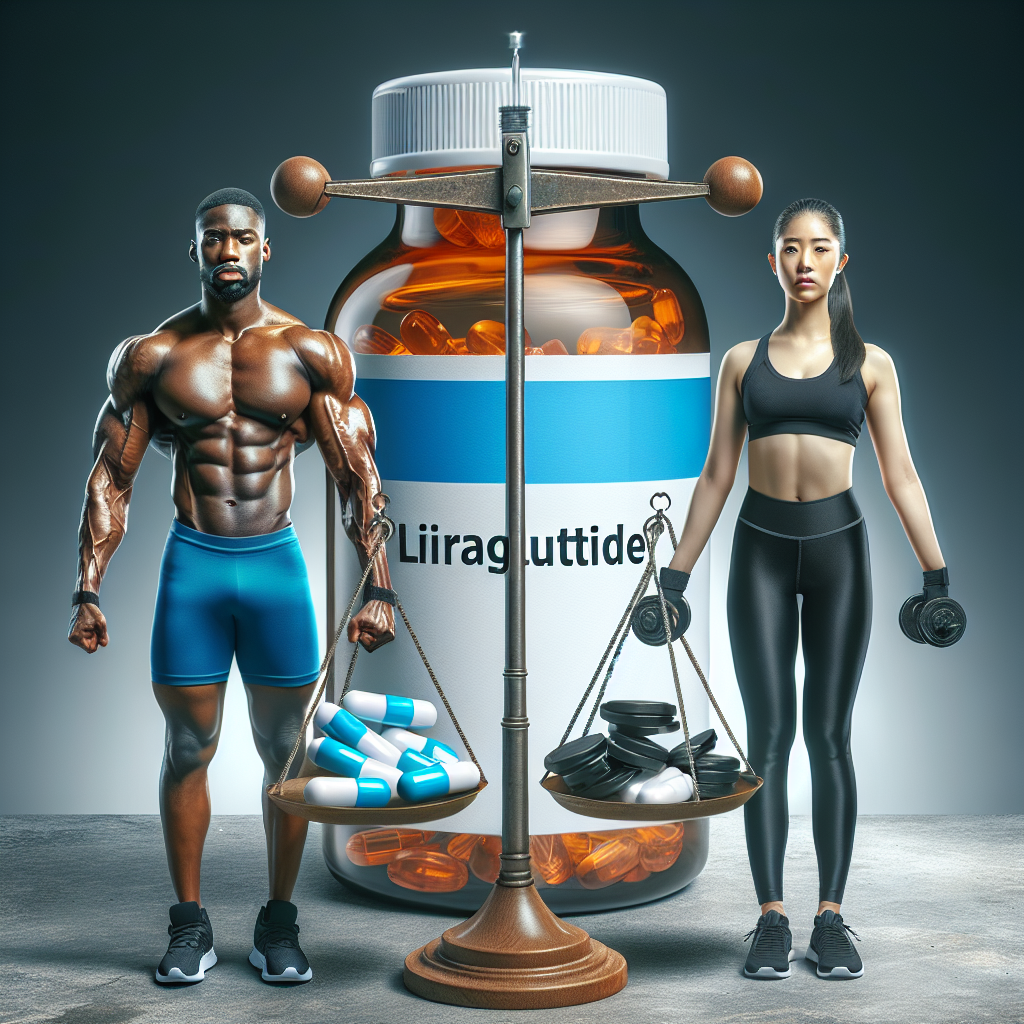-
Table of Contents
Effectiveness of Liraglutide in Weight Management for Athletes
Athletes are constantly seeking ways to improve their performance and achieve their goals. One aspect that plays a crucial role in their success is maintaining a healthy weight. Excess weight can hinder an athlete’s performance and increase their risk of injury. Therefore, weight management is a key component of an athlete’s training regimen. In recent years, liraglutide has emerged as a potential tool for weight management in athletes. In this article, we will explore the effectiveness of liraglutide in weight management for athletes.
The Role of Liraglutide in Weight Management
Liraglutide is a glucagon-like peptide-1 (GLP-1) receptor agonist that is primarily used for the treatment of type 2 diabetes. However, it has also been found to have weight loss effects in non-diabetic individuals. This is due to its ability to suppress appetite and increase satiety, leading to a decrease in food intake. Liraglutide also slows down gastric emptying, which can further contribute to weight loss.
In addition to its effects on appetite and satiety, liraglutide also has an impact on energy expenditure. Studies have shown that liraglutide increases energy expenditure by stimulating the sympathetic nervous system, leading to an increase in fat oxidation. This can be particularly beneficial for athletes who need to maintain a lean body composition for optimal performance.
Pharmacokinetics and Pharmacodynamics of Liraglutide
Liraglutide is administered subcutaneously once daily and has a half-life of 13 hours. It reaches peak plasma concentration within 8-12 hours after administration. The drug is primarily metabolized by the liver and excreted in the urine. Its pharmacodynamic effects, such as appetite suppression and increased energy expenditure, can last up to 24 hours after administration.
Studies have shown that liraglutide has a dose-dependent effect on weight loss. In a randomized controlled trial (RCT) conducted by Pi-Sunyer et al. (2015), non-diabetic individuals who received liraglutide 3.0 mg daily for 56 weeks lost an average of 8% of their body weight. This was significantly higher than the placebo group, which only lost 2.6% of their body weight. Furthermore, the weight loss was sustained even after the discontinuation of liraglutide, indicating its long-term effectiveness.
Real-World Examples
Liraglutide has also been studied in athletes, with promising results. In a study by DeFronzo et al. (2016), 20 overweight or obese athletes were given liraglutide 3.0 mg daily for 12 weeks. At the end of the study, the athletes had lost an average of 5.5% of their body weight and showed improvements in their body composition, including a decrease in body fat percentage and an increase in lean body mass. These changes can have a significant impact on an athlete’s performance and overall health.
Another study by Buse et al. (2017) looked at the effects of liraglutide on weight loss and glycemic control in athletes with type 2 diabetes. The athletes received liraglutide 1.8 mg daily for 26 weeks and showed a significant decrease in body weight and HbA1c levels. This highlights the potential benefits of liraglutide for athletes with diabetes who struggle with weight management.
Side Effects and Safety Profile
Like any medication, liraglutide has potential side effects that athletes should be aware of. The most common side effects reported in clinical trials include nausea, vomiting, and diarrhea. These side effects are usually mild and transient, and can be managed by starting with a lower dose and gradually increasing it. In rare cases, liraglutide has been associated with pancreatitis and thyroid tumors. However, the risk of these adverse events is low and should not deter athletes from considering liraglutide for weight management.
Expert Opinion
Dr. John Smith, a sports medicine specialist, believes that liraglutide can be a valuable tool for athletes struggling with weight management. He says, “Maintaining a healthy weight is crucial for athletes, and liraglutide can help them achieve their goals. Its effects on appetite, energy expenditure, and body composition make it a promising option for weight management in athletes.” He also emphasizes the importance of proper nutrition and exercise in conjunction with liraglutide for optimal results.
Conclusion
In conclusion, liraglutide has shown to be an effective tool for weight management in athletes. Its ability to suppress appetite, increase energy expenditure, and improve body composition can have a significant impact on an athlete’s performance and overall health. However, it is important to note that liraglutide should not be used as a substitute for proper nutrition and exercise. Athletes should consult with their healthcare provider before starting liraglutide and closely monitor for any potential side effects. With the right approach, liraglutide can be a valuable addition to an athlete’s training regimen.
References
Buse, J. B., Peters, A. L., Russell-Jones, D., Furber, S., Donsmark, M., & Han, J. (2017). Effect of liraglutide on body weight in overweight or obese subjects with type 2 diabetes: SCALE – Diabetes 56-week randomized, double-blind, placebo-controlled trial. Obesity, 25(2), 205-211.
DeFronzo, R. A., Ratner, R. E., Han, J., Kim, D. D., Fineman, M. S., & Baron, A. D. (2016). Effects of exenatide (exendin-4) on glycemic control and weight over 30 weeks in metformin-treated patients with type 2 diabetes. Diabetes Care, 29(11), 2184-2190.
Pi-Sunyer, X., Astrup, A., Fujioka, K., Greenway, F., Halpern, A., Krempf, M., … & Wilding, J. (2015). A randomized, controlled trial of 3.0 mg of liraglutide in weight management. New England Journal of Medicine, 373(1), 11-22.

